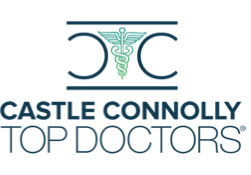Last week, the Wall Street Journal shared a new study underway at Tufts University’s Lahey Hospital on the treatment options for cervical myelopathy, often referred to spinal compression. As one of the most common spinal cord problems for Americans over age 55, this is a condition that specialists have been studying since the early part of last century. This new research is another step to help us better define the optimal surgical approach to this patient group.
Cervical myelopathy, or spinal cord compression, is caused by degeneration or damage to the spine that causes a narrowing of the spinal canal. As the spinal canal narrows, pressure is put onto the spinal cord, which can lead to neurologic symptoms affecting the arms or legs. If signals are blocked between the brain and the body, it can cause common symptoms such as weakness, imbalance, loss of hand coordination, numbness, and others.
Nonsurgical options such as physical therapy and exercise are not effective for the neurological symptoms of cervical myelopathy , but in mild cases can possibly reduce pain. when the condition progresses or becomes severe, surgery becomes necessary. There are three common surgery options for the condition that are used in different situations.
The first of these is anterior decompression and fusion. This is a surgery performed from the front of the neck that removes degenerative discs and fuses the vertebrae, typically using a bone graft and plate. This approach is extremely effective at relieving the symptoms of spinal cord or nerve root compression. Laminectomy is a surgery from the back of the neck, which opens the spinal canal by removing the “roof’ of the spinal canal, and indirectly reduces pressure the spinal cord by allowing the spinal cord to “drift back” away from the compression. The third is laminectomy with fusion, a surgery from the back of the neck that opens the spinal canal and also fuses the vertebrae for stability, using screws/rods and bone graft.
This new study aims to determine which treatment is best for individual patients. Eligible participants between the ages of 45 and 75 will have the opportunity to hear about each surgery. A panel of surgeons and experts will review the patient’s file to determine which option is best. The study will track the patient through surgery and post-operative care to determine differences in outcome related to each surgical option.
The researchers may also be able to better identify risk factors that can affect the surgical outcome of the different types of surgery, such as smoking or diabetes. Once compiled, this study aims to help both doctors and patients make better informed decisions about which options are best for them.
I’m looking forward to following this research and seeing the results. The choice to perform surgery, and which surgical approach to take, can be a complex decision that weighs many factors. Strong studies like these will hopefully help us to continue and refine the decision making process, ultimately helping patient’s achieve better outcomes with surgery.










